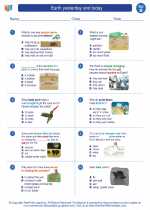Tissue Repair
Tissue repair is the process by which the body replaces damaged or dead cells. This is a crucial mechanism that allows the body to heal from injuries and maintain its overall function. There are two main types of tissue repair: regeneration and fibrosis.
Regeneration
Regeneration is the process by which damaged tissue is replaced by new cells of the same type. This is common in tissues with high regenerative capacity, such as the skin, liver, and bone marrow. When these tissues are injured, the surrounding cells can divide and differentiate to replace the damaged cells, restoring the tissue to its original state.
Fibrosis
Fibrosis occurs when the damage is extensive or the tissue has low regenerative capacity. In this case, the damaged tissue is replaced by scar tissue, which is made up of collagen fibers. While this type of repair is important for closing wounds and preventing infection, it can also lead to loss of function in the affected tissue.
Stages of Tissue Repair
- Inflammation: When tissue is damaged, the body initiates an inflammatory response to remove the injured cells and prepare the area for repair.
- Proliferation: During this stage, new cells are generated to replace the damaged ones.
- Remodeling: The final stage of tissue repair involves remodeling the newly formed tissue to regain its strength and function.
Study Tips
- Understand the different types of tissues in the body and their regenerative capacities.
- Learn about the various cell types involved in tissue repair, such as fibroblasts, immune cells, and stem cells.
- Understand the stages of tissue repair and the factors that can influence the process, such as age and underlying health conditions.
In conclusion, tissue repair is a critical process that allows the body to heal from injuries and maintain its function. By studying the mechanisms of tissue repair, we can gain insights into how the body responds to damage and develop strategies to promote and optimize the repair process.
.◂Science Worksheets and Study Guides Second Grade. Earth yesterday and today

 Worksheet/Answer key
Worksheet/Answer key
 Worksheet/Answer key
Worksheet/Answer key
 Worksheet/Answer key
Worksheet/Answer key
 Vocabulary/Answer key
Vocabulary/Answer key
